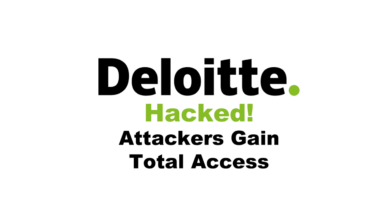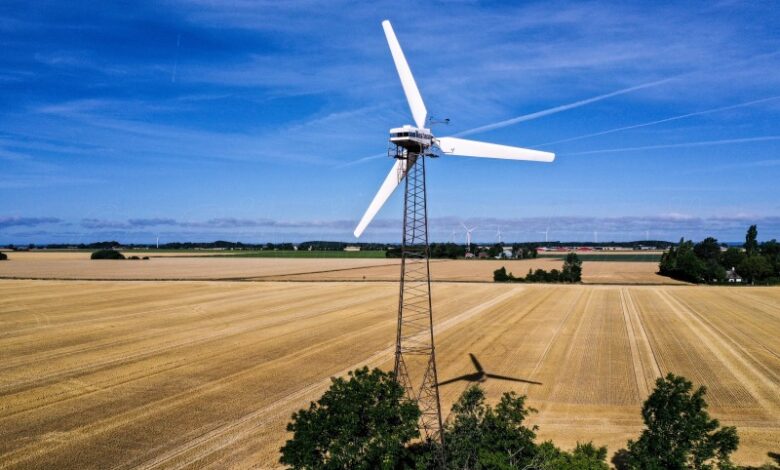
Vestas Wind Systems Suspected Ransomware Attack
Vestas Wind Systems suspected ransomware attack – the headline alone sends shivers down the spine, doesn’t it? Imagine the ripple effect: a global leader in wind energy, potentially crippled by malicious code. This isn’t just another cybersecurity incident; it’s a potential blow to renewable energy efforts and a stark reminder of how vulnerable even the biggest players can be.
We’ll delve into the details of this suspected attack, exploring the potential consequences, and examining what this means for the future of cybersecurity in the energy sector. Get ready for a deep dive into the digital battlefield.
The suspected attack on Vestas highlights the increasing sophistication of ransomware attacks targeting critical infrastructure. We’ll look at the potential attack vectors, the possible impact on wind energy production and supply chains, and the crucial role of robust cybersecurity measures. We’ll also analyze the potential legal and regulatory repercussions, the effect on investor confidence, and Vestas’ likely response strategy.
It’s a complex issue with far-reaching implications.
Vestas Wind Systems and Cybersecurity Vulnerabilities
The recent suspected ransomware attack against Vestas Wind Systems highlights the growing cybersecurity risks facing the renewable energy sector. While the specifics of the attack remain undisclosed, the incident underscores the critical need for robust cybersecurity measures within complex industrial control systems (ICS) environments. Vestas, as a global leader in wind turbine manufacturing and servicing, possesses a vast and intricate network of interconnected systems, making it a potentially lucrative target for cybercriminals.Vestas’ Cybersecurity Infrastructure and Potential WeaknessesVestas, like other large industrial companies, likely employs a multi-layered cybersecurity infrastructure.
This would include firewalls, intrusion detection/prevention systems, antivirus software, and access control mechanisms. However, the sheer scale and complexity of their operations, involving numerous remote wind farms, manufacturing facilities, and supply chain partners, present significant challenges. Potential weaknesses could include outdated software on legacy systems within wind turbines themselves, insufficient network segmentation to isolate critical infrastructure, and a lack of comprehensive employee cybersecurity training.
The vulnerability of remote access points used for maintenance and monitoring also presents a significant risk. Furthermore, the reliance on third-party vendors and suppliers introduces additional attack vectors.Typical Ransomware Attack Vectors Targeting Vestas’ ICSRansomware attacks targeting industrial control systems often exploit vulnerabilities in several key areas. Phishing emails, targeting employees with malicious attachments or links, remain a common entry point.
Exploiting known vulnerabilities in software used to manage and monitor wind turbines is another frequent method. Compromised credentials, obtained through phishing or other means, can grant attackers access to internal networks. Finally, attackers may leverage vulnerabilities in remote access tools, gaining unauthorized access to control systems. A successful attack could involve encrypting critical data, disrupting operations, and potentially causing physical damage to wind turbines.Comparison to Industry Best PracticesWhile Vestas likely adheres to many industry best practices, a successful attack suggests areas for improvement.
Best practices include rigorous vulnerability management programs, regular security audits, robust incident response plans, and the implementation of advanced threat detection capabilities. Furthermore, strong multi-factor authentication, robust network segmentation, and employee training on cybersecurity awareness are essential. Compared to other companies in the energy sector, Vestas’ response to this incident will help determine its overall cybersecurity posture and identify areas needing strengthening.
Benchmarking against industry leaders in cybersecurity maturity models would be beneficial in identifying gaps and prioritizing remediation efforts.Potential Impact of a Successful Ransomware AttackA successful ransomware attack on Vestas could have severe consequences. The disruption of wind farm operations would lead to significant financial losses due to reduced energy generation and potential penalties for failing to meet energy supply contracts.
Repair and remediation costs, including data recovery and system restoration, could be substantial. Damage to the company’s reputation and a loss of customer trust are also likely outcomes. Furthermore, supply chain disruptions could affect the production and maintenance of wind turbines, impacting the broader renewable energy sector. The potential for physical damage to wind turbines, though less likely in a ransomware attack, is a critical risk that needs to be mitigated.
Considering the scale of Vestas’ operations, a significant outage could have a substantial ripple effect across the global energy market.
The Suspected Ransomware Attack
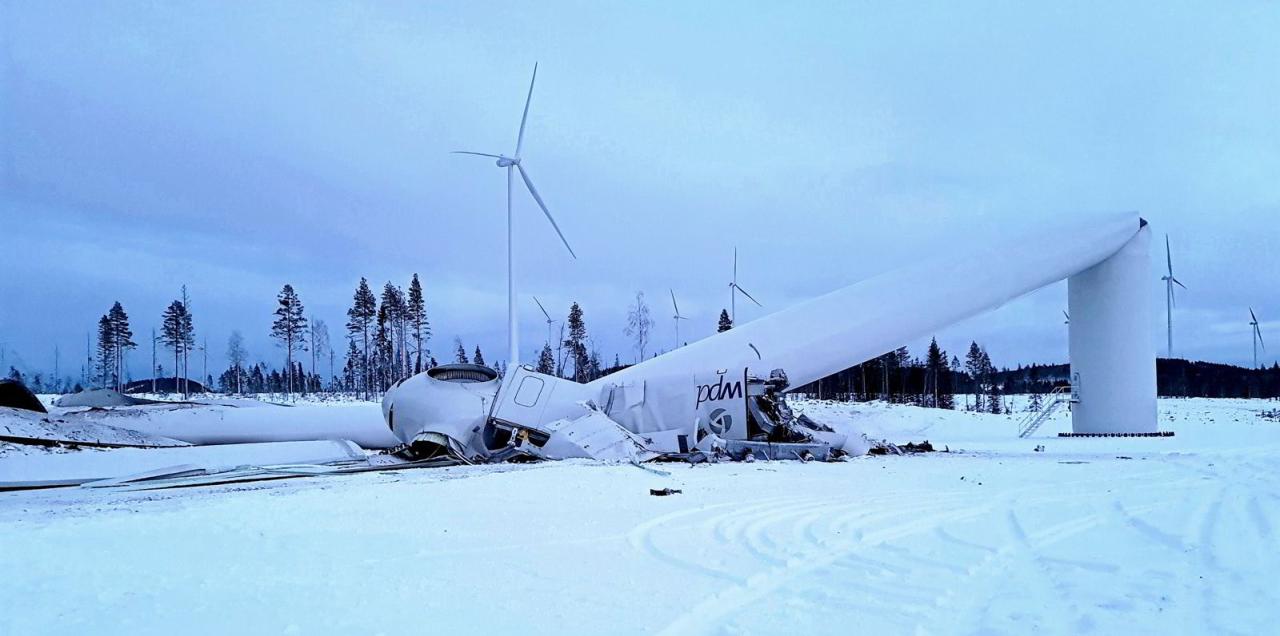
The suspected ransomware attack on Vestas Wind Systems sent shockwaves through the renewable energy sector and highlighted the vulnerability of even large, established companies to cyber threats. While details remain scarce due to the ongoing investigation, piecing together publicly available information provides a glimpse into the timeline and initial response to this significant incident. Understanding the chronology of events and the key players involved is crucial for assessing the impact and learning from this experience.
Timeline of Events
Unfortunately, precise dates surrounding the Vestas ransomware attack are not consistently reported across news outlets. This lack of transparency is common in the immediate aftermath of such incidents, as companies prioritize internal investigations and damage control. However, initial reports suggested the attack occurred sometime in late 2023, with the discovery and subsequent response efforts unfolding over several days or weeks.
Public acknowledgment by Vestas likely came later, potentially due to ongoing forensic analysis and coordination with law enforcement. A more precise timeline will likely emerge as investigations progress and official statements are released.
Initial Reports and News Coverage
Early reports on the Vestas incident, primarily from technology news websites and cybersecurity blogs, focused on the disruption to Vestas’ operations. These reports often cited anonymous sources within Vestas or the cybersecurity community. The initial articles highlighted the potential impact on wind turbine production, maintenance, and overall supply chain, emphasizing the significant economic consequences of a successful ransomware attack on such a large-scale player in the renewable energy market.
The Vestas wind systems ransomware attack highlights the vulnerability of even large corporations to cyber threats. Building resilient systems is crucial, and that includes considering the development tools we use; learning more about efficient development practices, like those discussed in this article on domino app dev the low code and pro code future , could help companies improve their security posture.
Ultimately, the Vestas incident underscores the need for robust security measures across all aspects of a business, from software development to network infrastructure.
Many of these initial reports lacked specific details about the ransomware group or the extent of data exfiltration.
Key Players in the Response
The response to the suspected ransomware attack involved a complex interplay of various actors. Vestas itself played a central role, leading internal investigations, coordinating with external cybersecurity experts, and managing communications with stakeholders. Law enforcement agencies likely became involved to investigate the criminal activity and potentially trace the perpetrators. It’s highly probable that Vestas engaged one or more specialized cybersecurity firms to assist with incident response, data recovery, and threat intelligence.
The specific names of these firms are usually not disclosed publicly, due to confidentiality agreements.
Alleged Ransomware Group
At the time of writing, the identity of the ransomware group responsible for the suspected attack on Vestas remains unconfirmed. This information is often withheld during active investigations to avoid tipping off the perpetrators and hindering law enforcement efforts. However, future reports may reveal more details about the group’s methods, targets, and operational characteristics. The lack of publicly available information on the specific ransomware group involved underscores the challenges in attributing these attacks definitively, even for well-resourced organizations like Vestas.
Impact Assessment and Potential Consequences
A successful ransomware attack on Vestas, a global leader in wind turbine technology, would have far-reaching and severe consequences, impacting not only the company’s financial stability but also its operational capabilities, reputation, and broader implications for the renewable energy sector. The scale of disruption would depend on the extent of data encryption, the systems affected, and the effectiveness of Vestas’ incident response plan.
Financial Impacts of a Ransomware Attack
The financial ramifications of a successful ransomware attack on Vestas could be substantial. Direct costs would include the ransom payment itself (if paid), the cost of incident response (including forensic analysis, data recovery, and system restoration), legal fees, and potential fines. Indirect costs could be even more significant, stemming from lost revenue due to production downtime, supply chain disruptions, and damage to the company’s reputation leading to decreased sales and project delays.
For example, a similar attack on a large manufacturing company could result in millions of dollars in losses, both direct and indirect. This figure could easily be multiplied for a global company like Vestas given its scale and interconnected systems.
Operational Disruptions and Supply Chain Impacts
A ransomware attack could severely disrupt Vestas’ operational capabilities. Critical systems, such as design software, manufacturing control systems, and supply chain management platforms, could be compromised, leading to production halts, delayed projects, and difficulties in fulfilling contracts. The disruption to wind energy production would have cascading effects throughout the supply chain. Suppliers, subcontractors, and customers would all experience delays and potential financial losses.
Imagine, for instance, a major wind farm project delayed due to the unavailability of crucial Vestas components resulting from the attack; this would represent a significant loss in renewable energy generation and a financial setback for the project’s investors.
Legal and Regulatory Ramifications
Vestas would face significant legal and regulatory ramifications following a ransomware attack. Data privacy regulations, such as GDPR in Europe and CCPA in California, mandate strict data protection measures. Failure to comply could result in substantial fines and legal action from affected individuals and regulatory bodies. Furthermore, Vestas could face legal challenges from customers and partners due to project delays, financial losses, and reputational damage.
The company might also be subject to investigations from cybersecurity authorities, potentially leading to further penalties. The consequences could vary significantly depending on the jurisdiction and the specifics of the attack and the company’s response.
Long-Term Effects on Investor Confidence and Market Standing, Vestas wind systems suspected ransomware attack
A major ransomware attack could severely damage Vestas’ reputation and erode investor confidence. The incident would likely lead to a decline in the company’s stock price and make it more difficult to secure future investments. The long-term impact on Vestas’ market standing would depend on the company’s ability to effectively manage the crisis, demonstrate its commitment to cybersecurity, and restore trust among its stakeholders.
A slow or ineffective response could lead to a sustained loss of market share and diminished competitiveness. Examples abound of companies that have suffered long-term reputational damage and financial losses after major cyberattacks, demonstrating the potential severity of such an event for Vestas.
Hypothetical Impact Assessment Matrix
| Impact Area | Severity Level | Likelihood | Mitigation Strategy |
|---|---|---|---|
| Financial | High (Millions to Billions of USD) | Medium (Dependent on attack scope and response) | Robust cybersecurity infrastructure, comprehensive insurance, incident response plan |
| Operational | High (Significant production downtime, supply chain disruption) | Medium (Dependent on critical systems affected) | Redundant systems, disaster recovery planning, business continuity management |
| Reputational | High (Loss of customer trust, damage to brand image) | High (Public awareness of cyberattacks) | Transparent communication, proactive public relations, swift incident response |
| Legal & Regulatory | Medium to High (Fines, lawsuits, investigations) | Medium (Dependent on data breach extent and compliance failures) | Strict adherence to data privacy regulations, robust legal counsel, proactive compliance |
Response and Recovery Strategies: Vestas Wind Systems Suspected Ransomware Attack
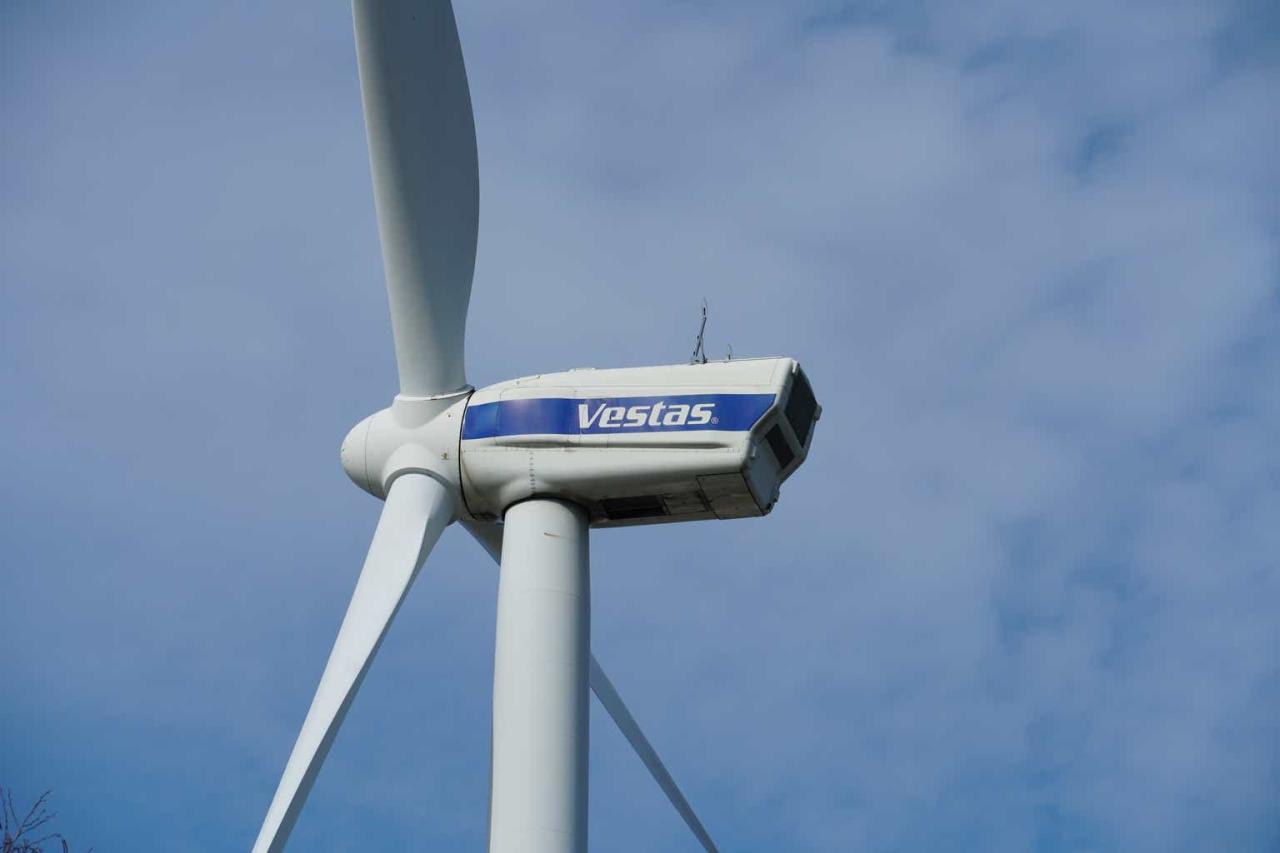
A suspected ransomware attack on a company the size and complexity of Vestas Wind Systems would trigger a multifaceted and highly coordinated response. The immediate priority would be to contain the attack, preventing further spread of the malware and protecting critical data and systems. This would involve isolating affected networks, shutting down vulnerable servers, and implementing strict access controls.
Following containment, the focus would shift to eradication, removing the ransomware and any associated malware from the affected systems. Finally, the recovery phase would begin, aiming to restore data and systems to their pre-attack state, allowing Vestas to resume normal operations.The choice of recovery strategy would be crucial. The immediate temptation might be to pay the ransom, especially if critical data is inaccessible and downtime is costing the company millions.
However, paying the ransom doesn’t guarantee data recovery, fuels further criminal activity, and doesn’t address the underlying security vulnerabilities. The preferred, and ultimately more sustainable, approach would be to restore data from backups. This requires robust and regularly tested backup systems, preferably stored offline and in geographically separate locations. The restoration process would involve verifying data integrity and implementing security measures to prevent future attacks.
Ransomware Recovery Strategies: Paying the Ransom vs. Data Restoration
Paying the ransom presents several significant risks. It emboldens attackers, provides them with financial resources for further attacks, and doesn’t guarantee data recovery or the elimination of the malware. In contrast, restoring from backups is a more secure and responsible approach, although it requires significant planning and investment in robust backup infrastructure. The time taken to restore from backups, however, could be considerable, potentially leading to significant downtime and financial losses.
The choice hinges on a risk assessment that weighs the immediate costs of downtime against the long-term risks associated with paying the ransom and the potential for future attacks. For example, the NotPetya ransomware attack in 2017, while not directly caused by a ransom payment, highlighted the cascading effects of a widespread cyberattack, even when the initial infection wasn’t directly targeted at the victim.
Many companies suffered significant losses even without directly paying a ransom.
Incident Response Planning and Cybersecurity Audits
Proactive incident response planning is paramount. Vestas, like any large organization, should have a detailed incident response plan that Artikels procedures for detecting, containing, eradicating, and recovering from cybersecurity incidents. This plan should be regularly tested and updated to reflect changes in the threat landscape and Vestas’ IT infrastructure. Regular cybersecurity audits, conducted by independent experts, are essential for identifying vulnerabilities and ensuring compliance with relevant security standards.
These audits should assess the effectiveness of existing security controls, identify areas for improvement, and provide recommendations for enhancing the overall security posture. A lack of proactive planning and regular audits leaves organizations vulnerable to significant disruptions and financial losses.
Steps to Improve Cybersecurity Posture
A robust cybersecurity strategy is crucial for preventing future attacks. Vestas should prioritize the following steps:
- Implement multi-factor authentication (MFA) across all systems and accounts to enhance access control.
- Strengthen employee security awareness training to mitigate phishing and social engineering attacks.
- Regularly update and patch software and operating systems to address known vulnerabilities.
- Invest in advanced threat detection and response technologies, including intrusion detection and prevention systems (IDS/IPS) and security information and event management (SIEM) systems.
- Segment networks to limit the impact of a potential breach. If one part of the network is compromised, the rest will remain secure.
- Conduct regular penetration testing and vulnerability assessments to identify and remediate weaknesses in its systems.
- Develop and maintain robust data backup and recovery procedures, including offline backups in geographically diverse locations.
- Establish a clear incident response plan and regularly test its effectiveness.
- Implement a strong data loss prevention (DLP) strategy to prevent sensitive data from leaving the organization’s control.
- Establish strong governance and oversight to ensure accountability and compliance with relevant security standards and regulations.
Lessons Learned and Future Implications
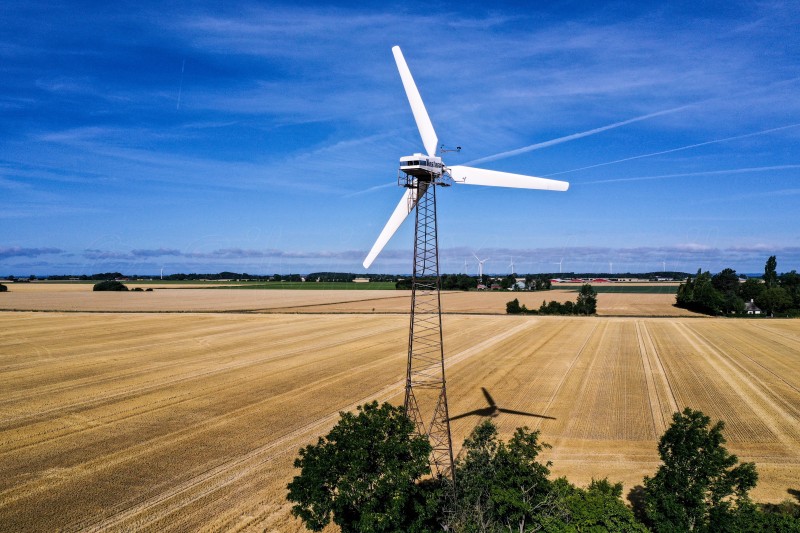
The suspected ransomware attack on Vestas Wind Systems serves as a stark reminder of the vulnerabilities inherent in increasingly interconnected industrial control systems (ICS). This incident highlights the critical need for proactive cybersecurity measures within the renewable energy sector and beyond, pushing the industry to re-evaluate its security posture and invest in robust, multi-layered defenses. The lessons learned from this event, if properly analyzed and implemented, can significantly improve the resilience of critical infrastructure against future cyberattacks.The Vestas incident underscores the critical need for comprehensive cybersecurity strategies that extend beyond traditional IT security.
The attack, if confirmed as ransomware, likely exploited vulnerabilities in the ICS environment managing Vestas’ wind turbine operations. This points to a lack of segmentation between operational technology (OT) and information technology (IT) networks, a common weakness in many industrial settings. The potential for significant operational disruption and financial losses resulting from such attacks emphasizes the urgency of implementing stronger security controls.
Securing Industrial Control Systems (ICS) Environments
Effective ICS security requires a multi-layered approach encompassing several key elements. Robust network segmentation isolates critical operational systems from the wider IT network, limiting the impact of a breach. Regular security audits and vulnerability assessments identify and address weaknesses before they can be exploited. Furthermore, implementing strong access control measures, such as multi-factor authentication and role-based access control, restricts unauthorized access to sensitive systems.
Finally, robust incident response planning and regular security awareness training for personnel are essential to mitigate the impact of a successful attack and prevent future incidents. The lack of any one of these elements can significantly increase the vulnerability of an ICS environment. For example, a lack of network segmentation allowed the NotPetya ransomware to spread rapidly through Ukrainian power grids in 2017, causing widespread outages.
Broader Implications for the Renewable Energy Sector and Global Cybersecurity Landscape
The suspected Vestas attack has significant implications for the renewable energy sector, a critical component of the global energy transition. Successful attacks on wind turbine manufacturers or operators could disrupt power generation, leading to energy shortages and economic losses. This incident reinforces the need for greater collaboration and information sharing within the industry to identify and address common vulnerabilities.
Furthermore, regulatory bodies need to consider updating cybersecurity standards and guidelines to reflect the evolving threat landscape. The incident also highlights the increasing sophistication of cyberattacks targeting critical infrastructure globally, demonstrating that no industry is immune. The increasing reliance on interconnected systems makes critical infrastructure vulnerable to cascading effects from a single successful attack, as seen with the Colonial Pipeline ransomware attack in 2021 which caused fuel shortages across the US East Coast.
Potential for Future Attacks Targeting Similar Critical Infrastructure
The vulnerability exposed by the suspected Vestas attack is likely not unique. Many industrial control systems, especially within the energy sector, share similar architectural weaknesses and legacy systems. The potential for future attacks targeting similar critical infrastructure is therefore high. Attackers may continue to exploit vulnerabilities in ICS networks to disrupt operations, steal intellectual property, or extort organizations through ransomware.
This underscores the need for proactive and preventative security measures, as well as the development of more resilient and secure systems. The increasing adoption of Internet of Things (IoT) devices in industrial settings further exacerbates the challenge, as these devices often lack adequate security features and can serve as entry points for malicious actors. The rise of sophisticated state-sponsored attacks also presents a significant threat, with actors potentially aiming for more than just financial gain, seeking to cripple critical national infrastructure.
Last Point
The suspected ransomware attack against Vestas Wind Systems serves as a potent wake-up call for the renewable energy sector and beyond. The potential disruption to clean energy production underscores the critical need for proactive cybersecurity measures, robust incident response plans, and ongoing collaboration across industries. The lessons learned from this incident, whether the attack is confirmed or not, will undoubtedly shape future cybersecurity strategies and highlight the vulnerabilities inherent in increasingly interconnected systems.
It’s a story that continues to unfold, and one that demands our attention.
Questions Often Asked
What type of ransomware is suspected to be involved?
That information is not yet publicly available. Investigations are ongoing, and the specific ransomware group involved may not be revealed until later stages of the investigation.
What is Vestas doing to mitigate the potential damage?
Vestas likely has a comprehensive incident response plan in place, involving containment, eradication, and recovery efforts. This could include isolating affected systems, restoring data from backups, and engaging with cybersecurity experts.
Could this attack impact the global energy supply?
The potential impact depends on the extent of the attack and Vestas’ ability to recover quickly. A significant disruption could affect wind energy production, potentially impacting the global energy supply, although the overall impact is hard to predict at this stage.
What steps can other companies in the energy sector take to prevent similar attacks?
Implementing robust cybersecurity measures, including regular security audits, employee training on phishing and social engineering attacks, and investing in advanced threat detection and response systems are crucial. Maintaining secure backups and developing detailed incident response plans are also vital.

